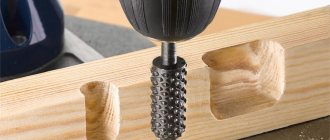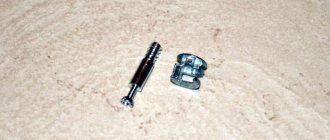Published:
20.01.2016
A hijack jack is an indispensable accessory for off-road enthusiasts, along with a winch or mud tires. The name Hijack comes from the abbreviation Hilftjack. This instrument was created by engineer Phillip Harrah back in 1905. Some people mistakenly believe that the instrument was invented by an American named Jack. Of course, this is wrong. Interestingly, such a jack was originally called a “sheep farmer’s jack.” This name was assigned, naturally, for a reason. The invention was often used by farmers on their farms, hence the name.
Design
Structurally, the jack is extremely simple, therefore it has very high reliability. Its design does not include parts that can fail or simply break. A rack and pinion jack can be characterized as a tightly knit tool in which pick-up can be carried out in all planes. The design is based on a rail made of cast iron or steel, on which holes or teeth are applied. The pick-up is driven by rotation or a lever with a handle, depending on the mechanism provided by the design. In addition, the rack and pinion hijack includes a support shoe, a lifting mechanism and a so-called beak.
The design of the device as a whole is quite simple. For this reason, there will probably be those who want to make a jack with their own hands. Typically, it will be made from the leftovers of something. As practice shows, such devices created by garage “Kulibins” fail at the most inopportune moment. Therefore, we strongly advise you to purchase a jack in a store and be firmly confident in its reliability.
How the jack works
Lifting occurs due to the operation of a ratchet mechanism moving along a metal rail. Using a lever, the jack body, in which the stops are located, moves, and the load moves along the perforated rail. When at the beginning of the movement the lever is strictly parallel to the rack, the load falls on a large area. When the lever is lowered, the connecting rod rests on a small platform, the load falls on the upper stop until it clicks into a hole in the rack. Next, the handle rises back, and the lower stop moves exactly one hole. This constitutes one lifting cycle.
When lowering, everything is done in reverse order.
Composition of rack jack
- Upper brackets.
- Bracket bolt.
- Planks with holes.
- Switch.
- Latch.
- Switch bolt.
- Lever.
- Upora.
- Connecting rod axles.
- Connecting rod.
- Bolt with nut.
- A lifting platform with a “beak”.
- Springs.
- Return slats.
- Cross finger.
- Lifting finger.
- Lift pin springs.
- Venues
- Connecting rod bolt.
- Heels with cotter pin.
Methods of application
Fans of off-road driving are especially interested in this tool. Most often, a hijack is used to lift an SUV stuck on the road as much as possible. By lifting the wheel of the “iron horse”, you can put something under it and rescue the car from a snow or mud trap. Universal instructions for use for hijack have not yet been created. It all depends on how the car is stuck, the design features of the SUV, etc. There are several lifting methods, which we will consider further.
1) Lifting by power structures . The essence of this method is that the rack and pinion “savior” rests on the power elements of the body. They can be a bumper, sills, guard rails, etc. This method is the simplest and, perhaps, the most universal. With its help, you can slightly lift the car from the front and pull it out using a winch.
2) Lifting by the bumper . This method can be useful when the car needs to be lifted in case of damage to the wheel in order to replace it. There may be cases when the bumper simply cannot support the weight of the entire car. For this case, the BamperLift accessory was created. It is attached to the beak of the jack and includes a chain and hook with which you can cling to the power elements located under the bumper. You can also grab onto the bridges or frame. In general, you can cling to any element that has sufficient strength. When purchasing an accessory, you need to pay attention to its load capacity. For example, for a Niva, a Hi-lift 485 120 cm long hijack is suitable, which will fit into the trunk when positioned diagonally.
In practice, not everything is as simple as it sounds in theory. If the car rests firmly on its belly, then it will be very, very difficult to grab onto anything from below. The only available remedy in this case may be towing eyes. If you cling to them, you should be very careful, as in this case you can easily lay the car on its side.
3) Lifting by the wheel . The absence of power elements on the body does not make the hijack useless. You can jack up the car by the wheel. But this requires a special accessory called LiftMate. Its design is as simple as the hijack itself. The LiftMate attaches to the beak of the rack jack. Next, the hijack is attached to the disk, after which you can safely lift the car. If the car is in a rut, then to lift it next to the wheel you need to dig a hole under the jack support, which will not be difficult for off-road enthusiasts. When purchasing a LiftMate, it is recommended that you do a test lift immediately. It is better to check everything in advance than to find out that the device is not at all suitable in “combat” conditions. In order not to scratch or damage the disc, when lifting it is recommended to use an accessory with rubberized hooks.
Another accessory is a hijack stand. This accessory is a support platform much larger than the heel of the hijack itself. This stand will be most useful on slippery or soft ground. By increasing the support area, the risk of the heel slipping or falling into the ground is reduced. You can easily make such a platform with your own hands.
4) Lifting by the towbar also requires a special adapter. It can be bought in specialized stores. Interestingly, this accessory does not have any English name. Therefore, we can assume that it was invented by domestic craftsmen. If the choice is between lifting by the towing eye or the towbar, then the second option is more preferable. But you should be careful, as there is still a risk of imbalance.
5) Hijack can be used as a winch . There are often situations when, in order to free a car from a trap, it is enough to move the car literally 40–50 centimeters. The jack in this case can easily complete the task. The versatility of this use lies in the fact that the hijack can pull the car in any direction. The jack has enough power to cope with difficult tasks.
6) In addition to all of the above, the jack can be used not for its main purpose, but as a press, clamp or vice . Versatility is one of the most significant advantages of this device. It will not be surprising that there are many more possible answers to the question of how to use a hijack.
Give me a foothold!
Archimedes also said that if he is given a fulcrum, he will move the Earth. To use a hi-jack instead of a winch, you need to attach it to some kind of mount on the ground. In the field, this is most often a tree trunk, although it could also be a stone, a slab, or a concrete block that somehow got in your way.
If there are no trees, stumps or stones, a spare tire will come to the rescue. It can be attached to uneven terrain (for example, in a hole or on a mound with old roots), and best of all, on some bushes (of course, not listed in the Red Book). The main thing is that the structure can withstand the weight of the car and the thrust of the hi-jack. The spare wheel is put on these bushes with the holes in the disk - and the replacement tree is ready.
Selection and purchase
How to choose a hijack? Before purchasing a jack, you first need to decide on the conditions of use, reliability, quality and price. There are many options on the market now. Among analogues, the original hijack and Hi-Lift, produced by an American manufacturer, have no competitors, at the same time their cost is the highest. If the jack will often be used in “combat” conditions, then it is best to choose this brand.
Hajdek - a “magic wand” in off-road conditions
If, for example, you rarely drive off-road and do not try to complicate your journey, then you can opt for Chinese brands. The best option is offered by Matrix. But it’s still worth remembering that the jack is selected for the specific needs of each car owner.
Despite the many advantages that a rack and pinion jack has, there is one disadvantage that cannot be ignored. It lies in the large size of the jack. For this reason, you can’t just put it in the trunk. There are also small models that are just over a meter long. They can somehow be placed in the trunk. However, with such a relatively short length it will not always be possible to rescue the car from the trap. For this reason, it is very often used to attach a hijack to a roof rack on a car.
Possible breakdowns and their elimination
The original hi-jack is considered a very reliable device and rarely breaks down. Most often, force failures occur from poor fastening or increased weight. In this case, it is necessary to replace the rack or other broken part.
It is recommended to use only original spare parts. You can buy cheaper Chinese analogues, but they will last very little.
The Hi-Jack is a very popular tool among off-road vehicle enthusiasts. Thanks to its quality and reliability, it is a must-have accessory for anyone who regularly makes off-road forays.
Bottom line
A rack and pinion jack, or hijack in other words, is a very useful device that will be a reliable and indispensable assistant in total off-road conditions. The jack does not require any special care. A simple lubrication with oil is enough, you can also use everyone’s favorite WD-40. When working with a hijack, it is imperative to follow safety precautions, otherwise you risk, at worst, losing your fingers, and at best, getting a couple of bruises on your face. You can share other non-standard hijacking methods in the comments to this article.
With hi-jack and...
A manual winch made from a rack jack is a simple device. This device consists of:
- main circuit;
- connecting links;
- chain shorteners;
- shaklov;
- textile sling.
If your task is to participate in competitions, then you can assemble the kit yourself in order to use a hi-jack instead of a winch. It is advisable to buy a chain not even in a fastening store, but in companies that sell rigging products. Its working load should be 4-5 tons. The working load of hooks and shucks is from 1.5 tons.
It's not just a ship that needs an anchor
Don’t forget about securing the car itself in place so that it doesn’t fall back when using the hi-jack as a winch, and making the path forward easier, or rather to where you are going to pull it. To do this, if possible, you should place boards, branches, bricks (without piercing or cutting fragments) under the wheels. This needs to be done both when starting to hi-jack and after you have pulled the car out a little. The support is placed under the rear wheels. It is also possible under the front ones, if it does not further interfere with movement when starting off. All manipulations will make it much easier for you to use the hi-jack as a winch. These procedures must be carried out not only at the beginning of the process, but also as it progresses - depending on the situation. In addition, when running a hi-jack, there are often cases when the car is pulled not forward, but up and sideways or even backwards. Then the emphasis of the machine must be adjusted according to the situation.











